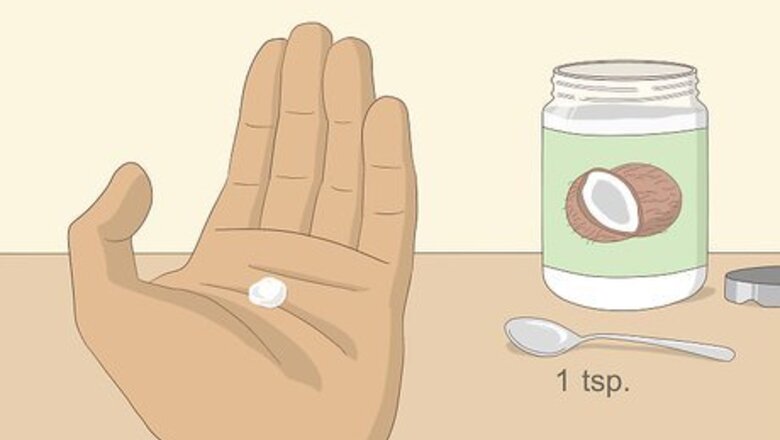
views
X
Expert Source
Joanna KulaSkincare Specialist
Expert Interview. 9 July 2019.
Cleansing Your Face with Coconut Oil
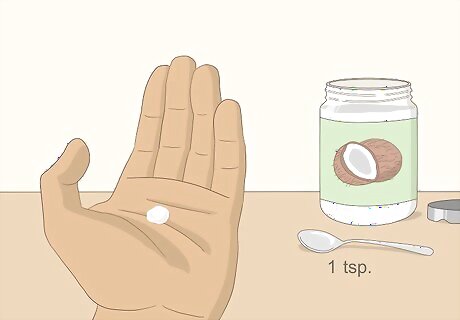
Place 1 teaspoon (4.9 ml) of coconut oil in your palm. Coconut oil is solid at room temperature, so use your finger or a spoon to scrape it out of the jar. A small amount, like 1 teaspoon (4.9 ml), will go a long way. If you’re dipping your fingers into your jar of oil, it’s best to wash your hands with soap first so you don’t spread any bacteria into the oil. For the best quality oil, choose organic, virgin coconut oil, which doesn’t have any additives and is 100% natural. It’s best to use this method no more than once a day, either in the morning or at night. Any more than that and your skin could become too oily.
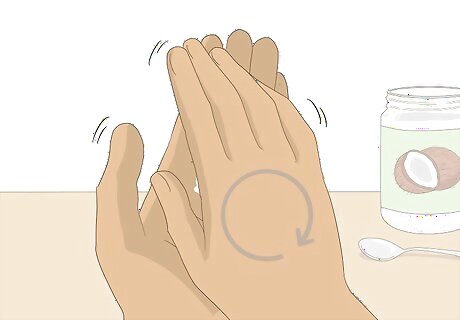
Rub your hands together lightly to soften the oil. Since the coconut oil is solid at first, melt it with your body heat so you can spread it easily on your face. Gently rub the dollop of oil between your palms in circles until the oil becomes liquid. The melting point for coconut oil is 77 °F (25 °C). Don’t rub too vigorously or your hands will soak up all of the oil and you won’t have any left for your face.
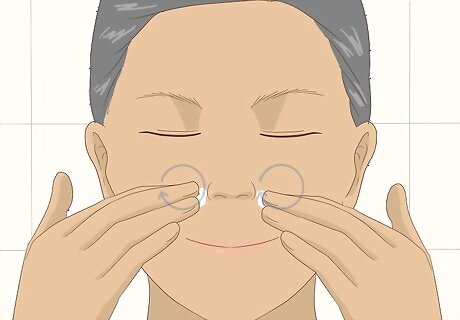
Apply the coconut oil to your face, massaging it into your skin. Use both hands to rub the oil in small circles all over your face. Pay special attention to any areas that are particularly oily or where dirt builds up, like your chin or in the creases next to your nose. The spots on your face that tend to get oilier are usually located in what’s known as the T-zone, which includes your forehead, nose, chin, and the skin around your mouth. Avoid getting any oil in your eyes. If you do, you’ll notice your vision might be blurry for a few minutes, but it will pass. If you have sensitive skin, do a patch test before you apply the oil to your entire face. Coconut oil can irritate sensitive or acne-prone skin, so make sure this is the right product for your skin type. Put the oil on a small spot, let it sit for 10 to 15 minutes, then rinse it off. If the spot is irritated or itchy, don’t use the coconut oil.
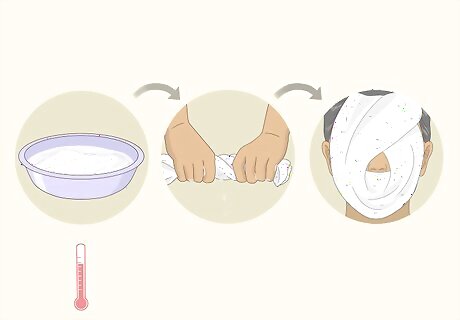
Lay a warm damp cloth over your face. Wet a clean cloth with warm water, then wring it out so it’s damp, but not dripping wet. Place it onto your face so it covers all of your skin. You can use hot water from the sink or microwave a damp cloth for 1 minute to warm it up.
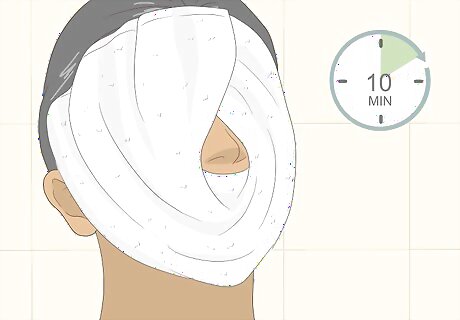
Let the cloth sit on your face for 10 minutes. This opens up your pores so your skin can soak up the oil better. Tilt your head slightly back so the cloth doesn’t slide off. Set a timer or use the clock app on your phone to keep track of the time.

Use the cloth to wipe off any excess oil. Once the 10 minutes are up, remove the cloth from your face and wipe it over your skin in a circular motion. This removes any oil that didn’t soak in, and also presses the remaining oil further into your pores. If your skin still feels a little oily, you can wash your face with a gentle cleanser afterwards. Apply moisturizer after cleansing your face if you really want to lock in the hydration.
Exfoliating with Coconut Oil and Baking Soda
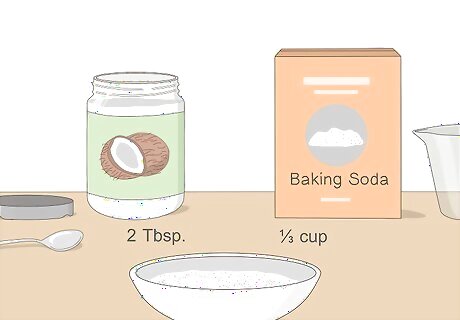
Mix coconut oil and baking soda to create a paste. In a small bowl, combine 2 tablespoons (30 ml) of coconut oil and 1/3 cup (173 g) of baking soda with a spoon until they’re thoroughly combined. The paste should be a gritty texture. You can also add 1 to 2 drops of your favorite essential oil if you want a specific scent. For example, you could mix in lemon, rose, or frankincense oils.
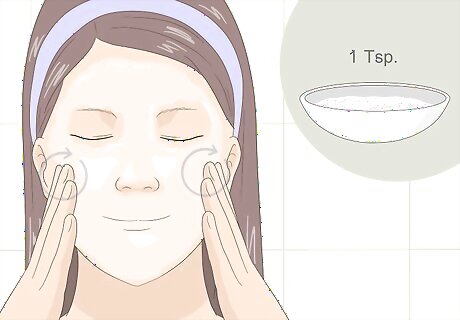
Massage 1 teaspoon (4.9 ml) of the mixture into your face. Take a small dollop of the coconut oil paste and rub it into your skin. Press firmly but gently as you move your hands in small circles around your face, so that the oil soaks into your pores. Focus on spots that tend to accumulate more dirt or oil, like the area around your mouth, your forehead, or your chin. If you want a deeper clean, you can let the scrub sit on your skin for 5 to 10 minutes. Apply the baking soda and coconut oil scrub 1 to 2 times a week. Exfoliating too often can be harsh on your skin and dry it out.
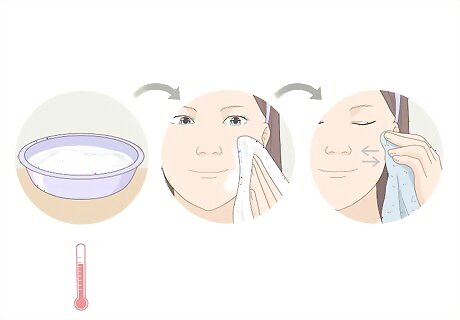
Rinse off the scrub with a cloth and warm water, then pat your face dry. To remove the oil and baking soda, wet a clean cloth with warm water and wipe it across your skin until there’s no paste left on your face. Dry your skin by lightly patting it with a fresh towel. You may need to rinse the cloth after a couple of wipes to get rid of the paste on the cloth so you aren’t just smearing it around your face. If you have dry skin or want a little extra hydration, apply a facial moisturizer after you rinse and dry off your face.
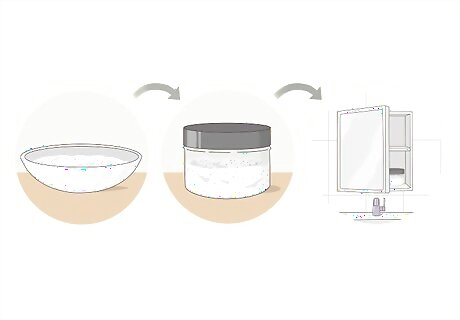
Store the leftover scrub in an airtight container for up to 1 year. Scoop the mixture into a resealable container, then secure the lid so no air can get in. Keep the container in a cool, dark place, like a bathroom cupboard or drawer. You can also use a glass jar to store the scrub, as long as it has a tightly sealed lid. You don’t need to refrigerate the mixture. However, don’t put it anywhere warm or in direct sunlight or it will melt.
Using Coconut Oil in Other Ways on Your Face
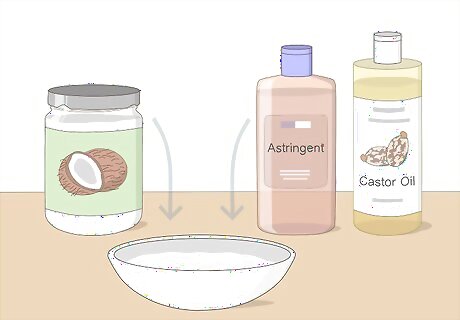
Blend coconut oil with different oils to customize your cleanser. Choose another oil to combine with the coconut oil based on what scents you like or what type of skin you have. For example, if you want a deeper clean, use an astringent oil, like castor or hazelnut oil, with your coconut oil. Castor oil is a great option for anyone who's prone to acne or breakouts. The more oily your skin is, the more astringent oil you should use. For example, if you have very oily skin, use a mix of 30% astringent oil and 70% coconut oil. If you have dry skin, use as little as 5% astringent oil and 95% coconut oil. You can also mix in 1 to 2 drops of essential oils to get the benefits of aromatherapy
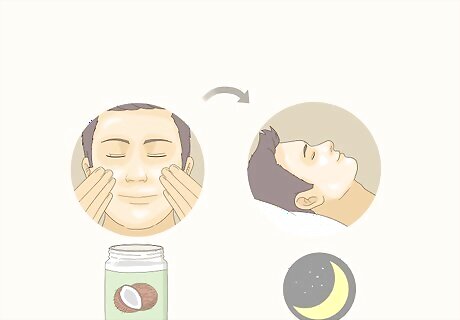
Leave coconut oil on your skin overnight for a deep moisturizer. Apply a thin layer of coconut oil all over your face before bed, using a clean towel to lightly pat off any extra oil. Then, in the morning, rinse your face with warm water to remove any oil that wasn't absorbed into your skin. An overnight oil treatment is best for people with dry skin. If you have oily skin, leaving coconut oil overnight could clog your pores.
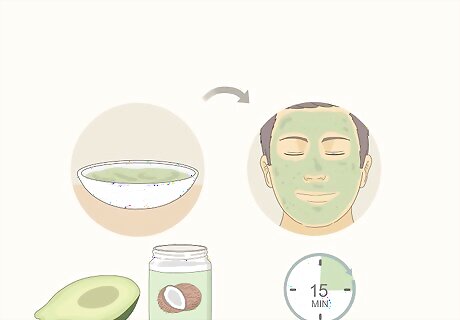
Mash 1 avocado with coconut oil to make an anti-aging treatment. Use a fork to combine 1 avocado with 2 tablespoons (30 ml) of coconut oil. Slather the mixture onto your face, then let it sit for 15 minutes before rinsing it off. Avocados are a great source of nutrients, healthy fats and antioxidants. Incorporating them into your skincare routine can help soothe, soften and moisturize the skin. The riper the avocado, the easier it will be to mash up. Pick one that's dark green and squishy. You can also put the ingredients in a blender to puree them together.
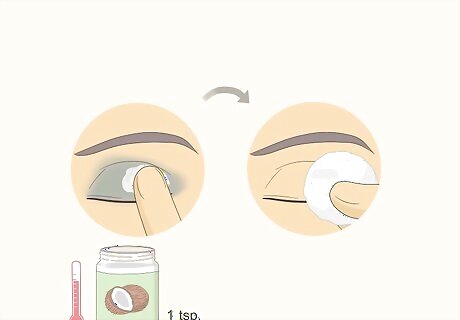
Swipe coconut oil over your eyes and face to remove makeup. Warm up 1 teaspoon (4.9 ml) of coconut oil between your fingers and lightly apply it wherever you have makeup that you want to take off, like on your eyelids to remove eyeshadow. Then use a cotton ball to wipe off the oil, along with the makeup. Try not to get the oil in your eyes, or it will make your vision blurry for a few seconds.

Mix coarse sugar with coconut oil to exfoliate your lips. Combine 1.5 tablespoons (22 ml) of coconut oil with 2 tablespoons (25 g) of white sugar, and 1 teaspoon (10 g) of turbinado sugar. Apply the scrub to your lips, rubbing in firm circles, before rinsing off with water. If you don't have turbinado sugar, you can substitute brown sugar or even more white sugar. Don't exfoliate your lips more than 2 times a week or you could damage the skin. Store your scrub in an airtight container in the refrigerator for up to 3 months.


















Comments
0 comment